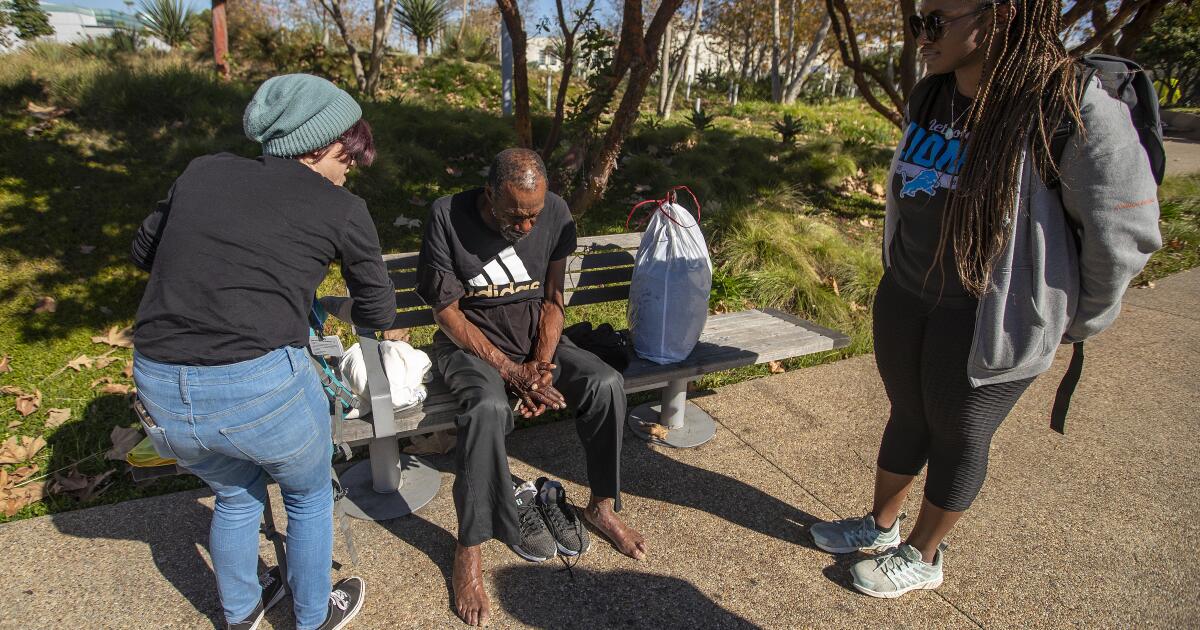Construction workers found a hidden secret beneath the concrete at San Pedro High School — thousands of marine fossils that serve as a reminder of the Palos Verdes Peninsula’s ancient geological past.
The researchers identified two separate sites on campus where new buildings were being constructed: a bone deposit that is 8.7 million years old, from the Miocene era, and a shell deposit that is about 120,000 years old, from the Pleistocene era.
Now that the buildings are complete, scientists are focusing on learning from fossils that are several million years old.
“Such a density of fossils has never been found at a site like this before in California,” said Wayne Bischoff, director of cultural resources at Envicom Corp., which managed the collection of the excavated fossils. “This is the largest marine bone bed ever found in Los Angeles and Orange counties.”
The campus of San Pedro High School, site of the fossil discovery.
(Austin Hendy / Natural History Museum of Los Angeles County)
Bischoff said the marine fossils fit with what researchers already knew: that the land has been underwater for most of Los Angeles’ geological history.
“We’re kind of like detectives,” said Richard Biehl, a geologist at Long Beach State.
Behl is testing the chemical and mineral composition of the fossil blocks, hoping scientists will learn more about these prehistoric environments, including the atmosphere and the conditions that caused the animal remains to become fossilized. “We have to look for clues and put those clues together.”
The Miocene period fossils were encased in a type of fossilized algae called diatomite. Biehl said the diatomite told them the area was a nutrient-rich habitat for algae that supported a complex ecosystem, including dolphins, fish and whales that flocked to the area for food. Along with the marine animals, Bischoff said he was excited to find an entire coastal ecology that included sandpiper skulls and pieces of driftwood in the bone bed.
“When we realized we had a mix of coastal material … I started thinking there might be an extinct island off the coast,” Bischoff said.
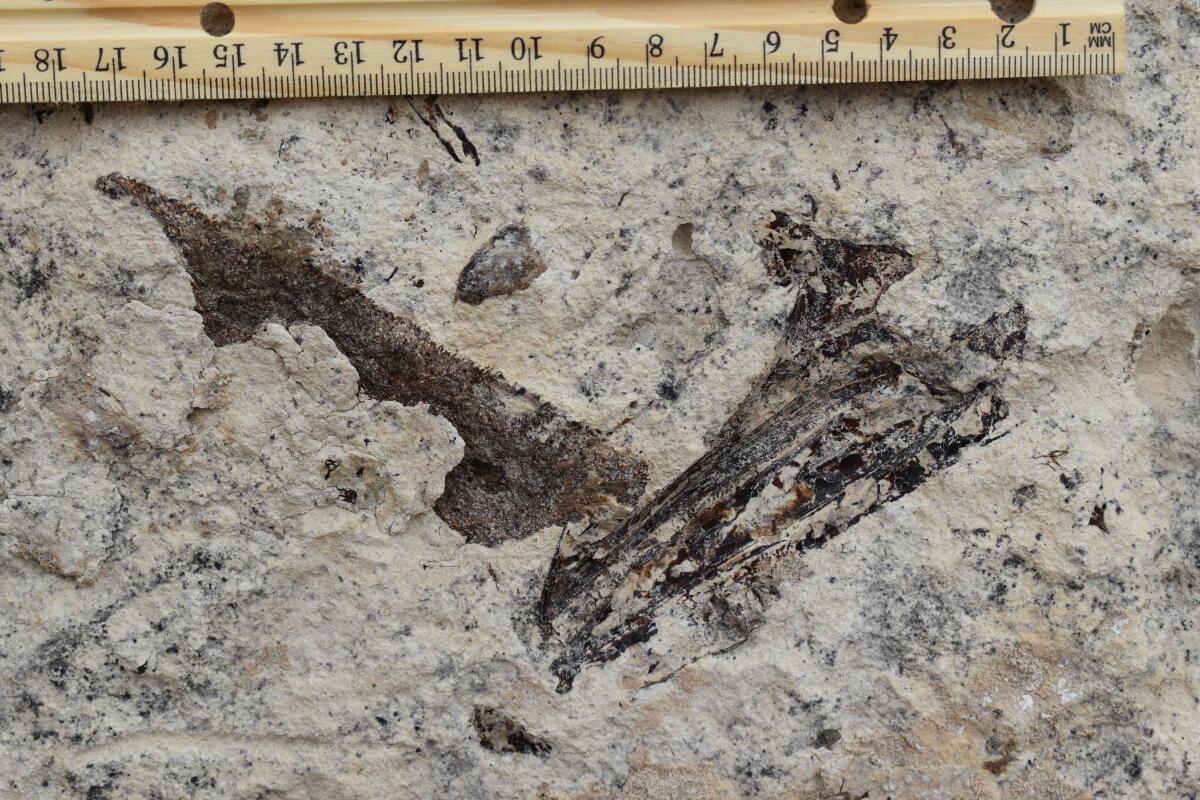
One of the items found beneath the school included the fossilized jaw of a sabertooth salmon.
(Wayne Bischoff/Envicom Corp.)
Bischoff hypothesized that during the Miocene epoch, a heavy storm swept plant and animal debris from a prehistoric island into a submarine canyon, before mud sealed the organic matter in a layer of sediment. Tectonic activity and receding sea water revealed those fossils millions of years later.
“After their experience at this site, (scientists) started looking for other extinct islands,” Bischoff said. “It seems that a lot of islands in the Channel Island zone formed and then went extinct.”
Bischoff said construction of new buildings on campus has been completed and 80% of the fossil blocks expected to be found in 2022 have been handed over to research and educational institutions. Those fossils are now distributed among the Los Angeles Unified School District, the Cabrillo Marine Aquarium, Cal State Channel Islands and the Natural History Museum of Los Angeles County.
This summer, Natural History Museum assistant curator Austin Hendy, who specializes in invertebrate paleontology, spent hours sifting through and sorting through thousands of fossil shells found in the shale bed.
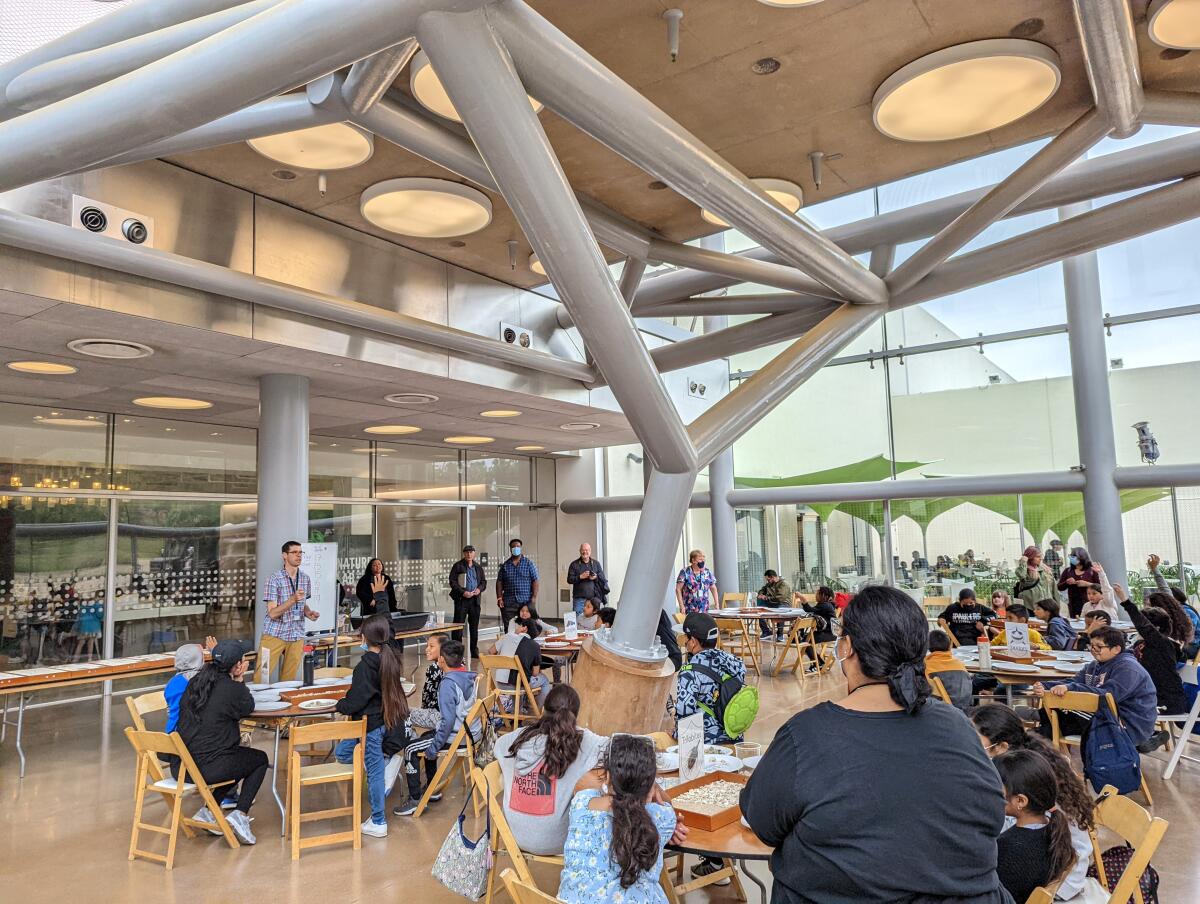
Students from Betty Plasencia Elementary School in Los Angeles visit the LA Underwater section at the Natural History Museum of Los Angeles County.
(Michelle Jimenez)
The discovery has inspired at least one high school student to study the past to understand the present.
“It was like finding gold,” said Milad Esfahani, a San Pedro High School student who helped Hendy sort the fossils by size. “I was tasked with looking for small, microscopic fossils ranging in size from one-eighth to one-sixteenth of an inch.”
It was the first time 17-year-old Milad held a 125,000-year-old fossil in his hands and he now hopes to study marine paleontology at university as he applies to colleges this fall.
The Natural History Museum has not announced plans to display fossils found beneath the school, but there is already a marine paleontology section on display called L.A. Underwater.
Hendy hopes to work with another student next summer to develop an exhibit at San Pedro High School, part of efforts to educate and engage the public about L.A.’s prehistoric past.
“The discovery can continue — these blocks erode very slowly,” Hendy said of the fossil blocks unearthed from the school. “We hope that in years to come students and the general public will be able to climb these rocks and be inspired by what they find.”
Though the work can be laborious and seem pedantic to others, scientists like Behl are drawn to the task because it reveals how our present is still being shaped by Earth’s 4.54 billion year history.
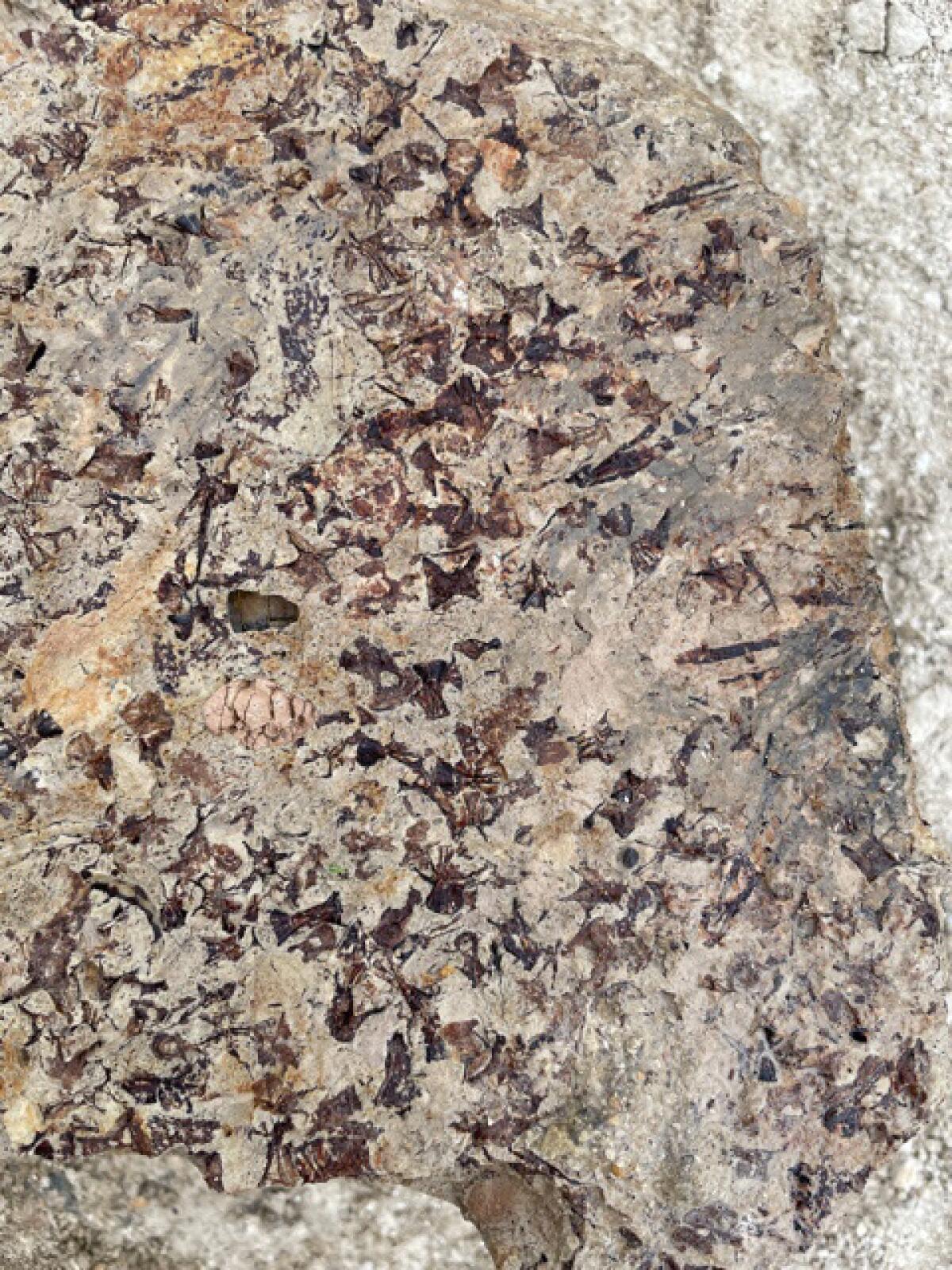
The discovery includes fossils of the vertebrae of hundreds of small fish.
(Austin Hendy / Natural History Museum of Los Angeles County)
“It’s a real glimpse into what the geography of the oceans and the land was like at the time this event happened,” Biehl said. “Even though it seems like a long time ago, it has a real impact on everything we have today.”
In fact, many Angelenos rely on fossils for their daily activities — they fuel our fuel tanks.
“The diatoms in that diatomite gave birth to the oil and automobile and aeronautical industries in Los Angeles,” Hendy said. “The city’s history is a result of geology.”
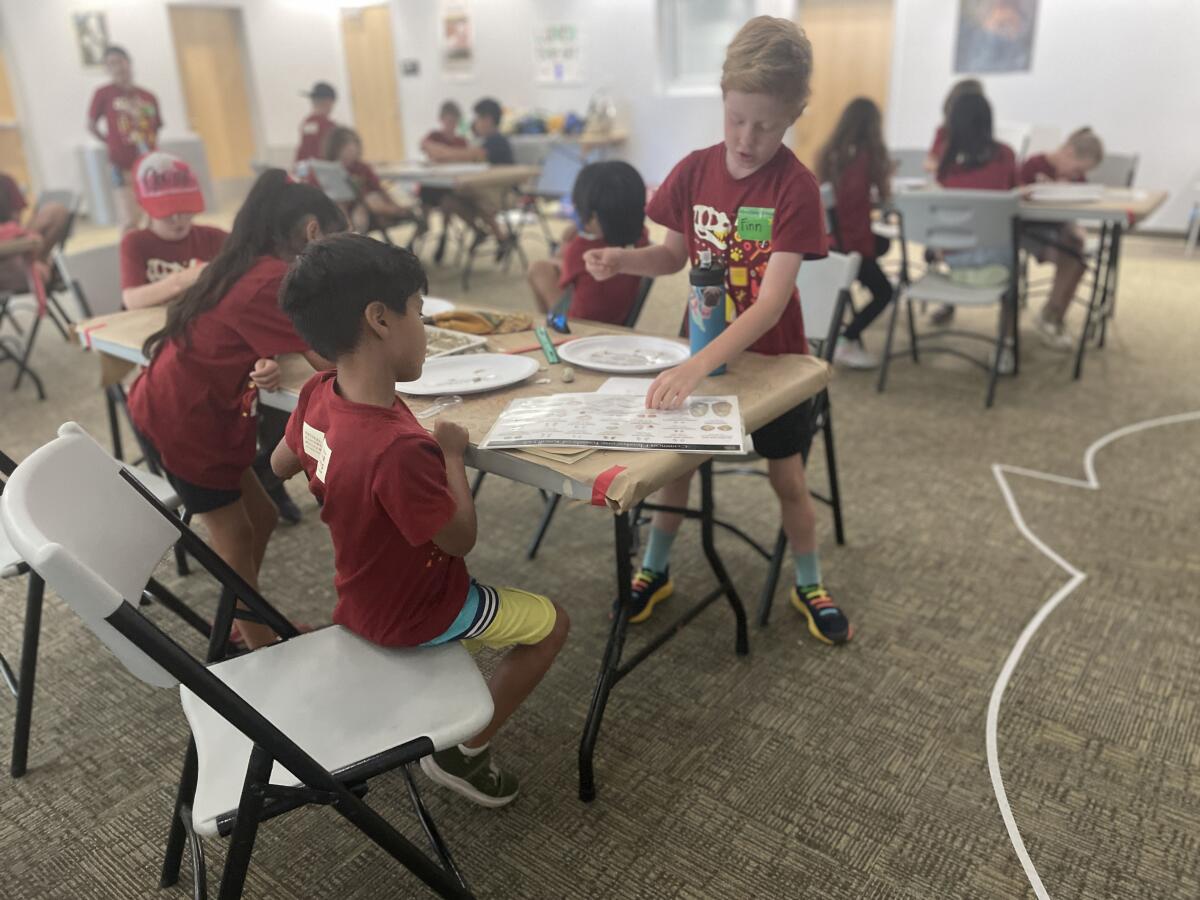
Summer campers learn how to sort fossils from San Pedro.
(Austin Hendy / Natural History Museum of Los Angeles County)













